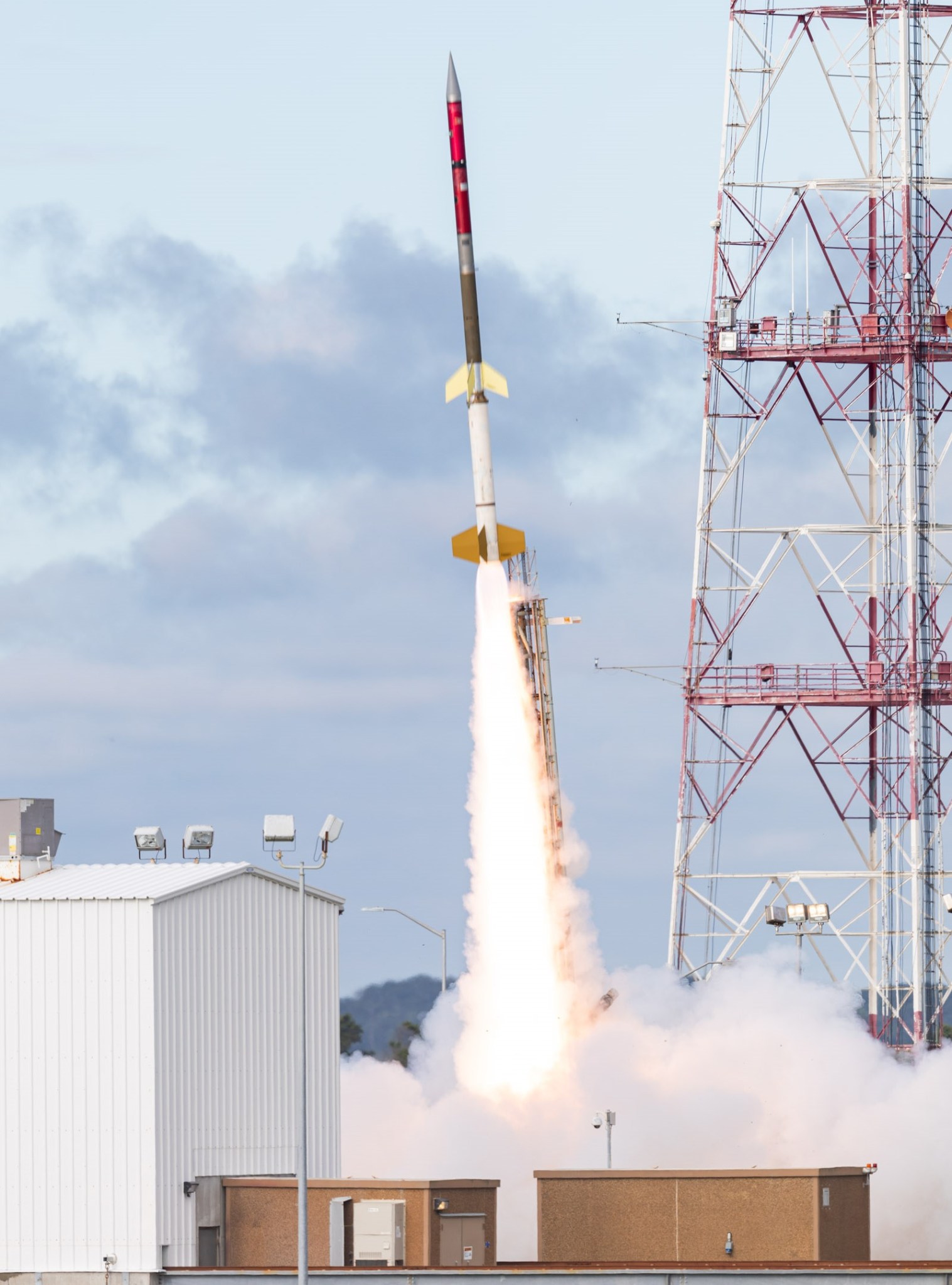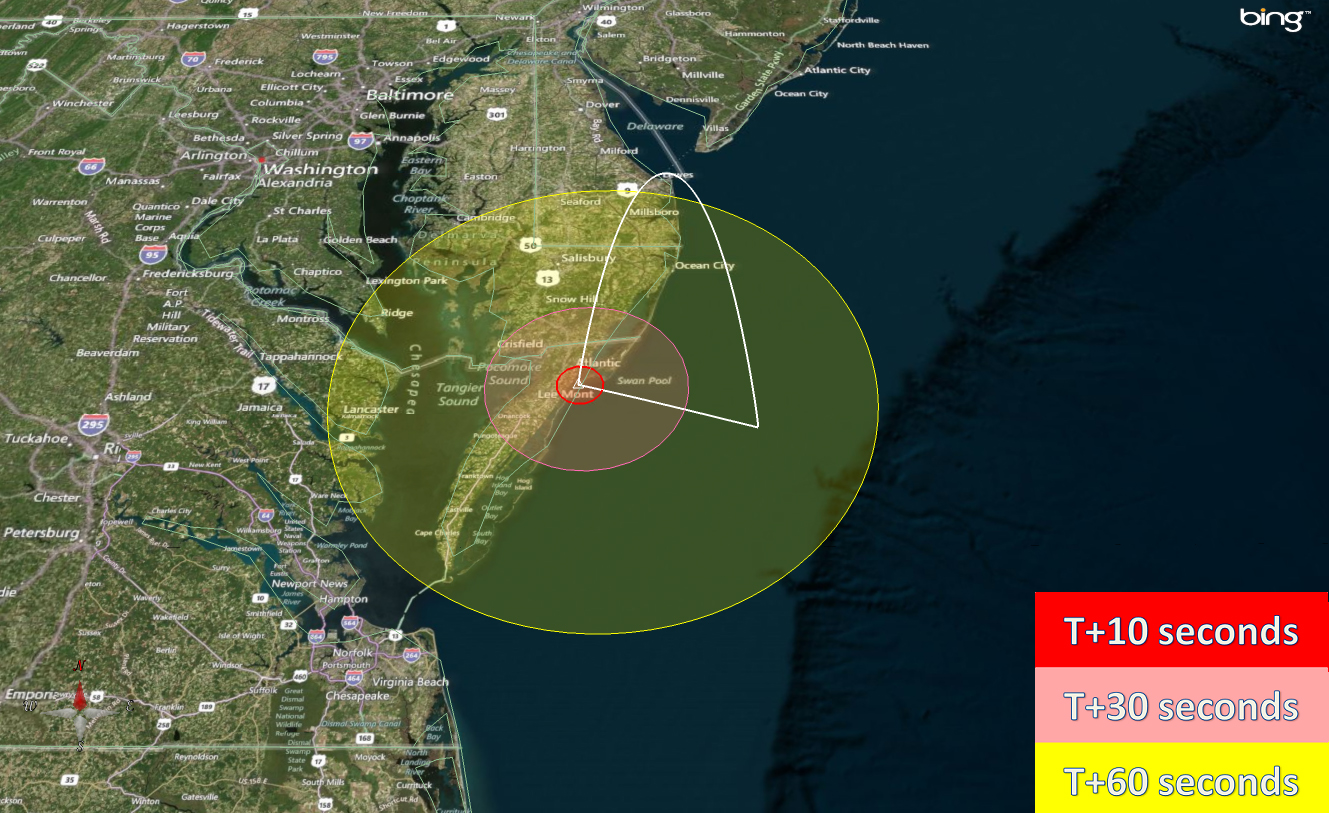Update June 22, 2022: The launch of the Terrier-Improved Orion sounding rocket carrying the RockOn/RockSat-C/Cubes in Space educational payloads has been postponed from Thursday, June 23, to Friday, June 24, at 5:30 a.m. EDT. Launch has been postponed due to a payload technical issue, expected unacceptable weather for launch and poor sea conditions in the payload recovery area.
After being developed via a virtual learning experience, approximately 60 experiments built by university students across the United States are ready for flight on NASA suborbital flight vehicles.
The launch of a NASA Terrier-Improved Orion suborbital sounding rocket carrying most the students’ experiments will be conducted at 5:30 a.m. EDT, Thursday, June 23, from NASA’s Wallops Flight Facility in Virginia. The rocket launch is expected to be seen from the eastern shore of Virginia and Maryland and southern Delaware.
The experiments were developed through the RockOn, RockSat-C and Cubes in Space programs.
“This will be the fourteenth year that the NASA Sounding Rocket Program has provided a suborbital rocket flight for undergraduate university students to fly their experiments into space. This unique project provides an opportunity for students to obtain hands-on experience in developing space-flight experiments, which is vital in developing future scientists and engineers,” said Giovanni Rosanova, chief of the NASA Sounding Rockets Program Office at Wallops.
Live coverage of the mission is scheduled to begin at 5:10 a.m. on the Wallops YouTube site. Launch updates also are available via the Wallops Facebook and Twitter sites. The Wallops NASA Visitor Center will not be open for launch viewing.
The 36-foot long two-stage rocket will carry 39 experiments (measuring acceleration, humidity, pressure, temperature and radiation counts) from the RockOn program, 7 experiments in the RockSat-C program and approximately 80 small cubes with experiments developed by middle school and high school students as part of the Cubes in Space program, a partnership between idoodlelearning inc., Wallops and the Colorado Space Grant Consortium.
RockOn and RockSat-C are conducted in partnership with the Colorado and Virginia Space Grant Consortia.
The sounding rocket will fly the student experiments to nearly 73-miles altitude. The experiments will land via parachute in the Atlantic Ocean where they will be recovered by boat. After recovery, the experiments will be returned to the students waiting to see how their experiments performed.
Participants in RockOn receive instruction on the basics in developing a scientific payload for flight on a suborbital rocket. After learning the basics in RockOn, students may then participate in RockSat-C, where during the school year they design and build a more complicated experiment for rocket flight.
“In a typical year the RockOn program is conducted through a week-long in-person workshop at Wallops. However, due to COVID-19, the workshop had to be conducted virtually,” said Chris Koehler, director of the Colorado Space Grant Consortium. “We are excited that as we emerge out of the pandemic some of the RockOn and RockSat-C participants will be at Wallops to participate in the experiment integration, view the launch and partake in the experiment de-integration from the sounding rocket after recovery.”
This year RockOn! had a record 208 participants. Colorado Space Grant sent the participants the materials needed to participate in the workshop and build their experiments. The participants then shipped their experiments to Colorado for checkout and integration. A team from Colorado then delivered the experiments to Wallops for the launch.
The virtual process enabled more experiments to be successfully developed than the in-person workshop, resulting in more flight-ready projects than could be accommodated on the rocket. Therefore, 14 experiments will fly on the High-Altitude Student Platform through the Louisiana Space Grant Consortium on a NASA scientific balloon in Fall 2022 from Ft. Sumner, New Mexico.
The RockOn and RockSat-C programs are supported by the NASA Sounding Rocket Program, NASA’s Office of STEM Engagement and NASA’s National Space Grant College and Fellowship Program in partnership with the Colorado and Virginia Space Grant Consortia, as well as the program participants.
NASA’s Sounding Rocket Program is conducted at the agency’s Wallops Flight Facility, which is managed by NASA’s Goddard Space Flight Center in Greenbelt, Maryland. NASA’s Heliophysics Division manages the sounding rocket program for the agency.
RockSat-C participants and projects
Cubes in Space
Cubes in Space is an educational program for students ages 11-18 to design experiments in a 40 mm cube and launch on a sounding rocket. The program builds awareness in the pre-college age group about easily accessible, short-duration, and relatively low-cost spaceflight missions and opportunities in support of scientific exploration objectives.
Hobart and William Smith Colleges
The Hobart and William Smith Colleges (Geneva, New York) team will record spectra in different wavelength regions (visible light, UV, and thermal radiation) of the spectrum and measure highly charged particles called muon flux at various altitudes within the atmosphere.
Old Dominion University
The Old Dominion University (Norfolk, Virginia) team will explore the practicality and accuracy of additive manufacturing while experiencing aggressive changes in gravitational forces explored in a sounding rocket platform.
Temple University
The Temple University (Philadelphia, Pennsylvania) team will implement a single-bubble sonoluminescence (producing light from sound) experiment aboard payload to compare the change in illumination with respect to the change in gravity over time.
University of Delaware
The University of Delaware (Newark) team will conduct several experiments. The first is to quantify the effects that high radiation exposure levels have on high frequency components, while simultaneously developing an open-source project platform for future use within the RockSat community. They also plan to collect miscellaneous flight data and test the physical durability of a gallium nitride transistor. The third experiment is to accurately measure the temperature and density of electrons as a function of changing altitude in the D and E layers of the ionosphere.
Southeastern Louisiana University
Southeastern Louisiana University (Hammond) team will conduct a geophysical experiment to study the ionosphere and a mechanical experiment to study re-entry dynamics of the rocket.
West Virginia Collaboration
The West Virginia Collaboration (comprised of students from West Virginia University, Morgantown; Blue Ridge Community and Technical College, Martinsburg; West Virginia State University, Institute; and West Virginia Wesleyan College, Buckhannon) will characterize flight dynamics and observe solar activity in the infra-red, visible, and ultra-violet light, muon detection, and create and design an autonomous navigation assistant.
University of Puerto Rico
The University of Puerto Rico (San Juan) team will test the Oxford Nanopore VolTRAX Sample Preparator to set new precedents for in-flight DNA and RNA sampling processes. Internal and external sensors will provide context of flight conditions and profile to better understand the device’s limits.
Keith Koehler
NASA’s Wallops Flight Facility, Virginia





























